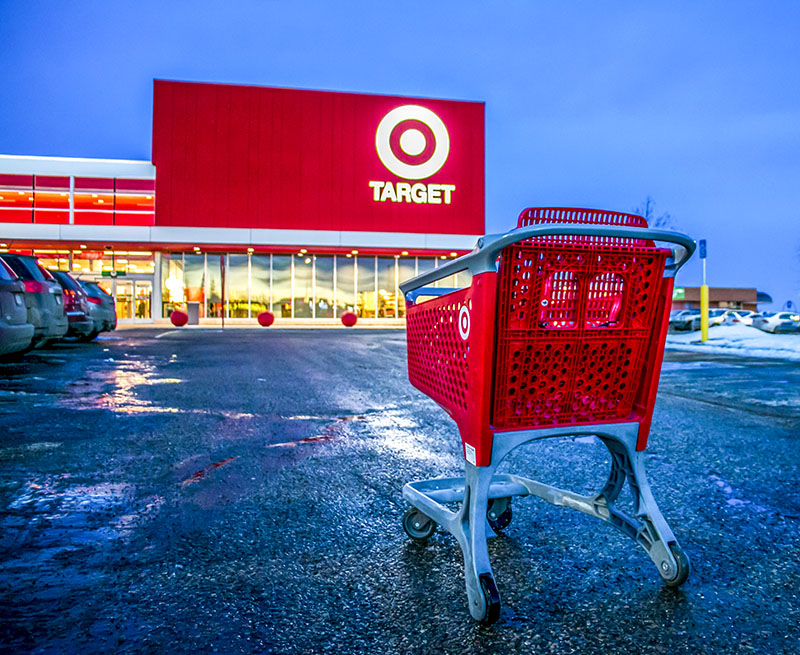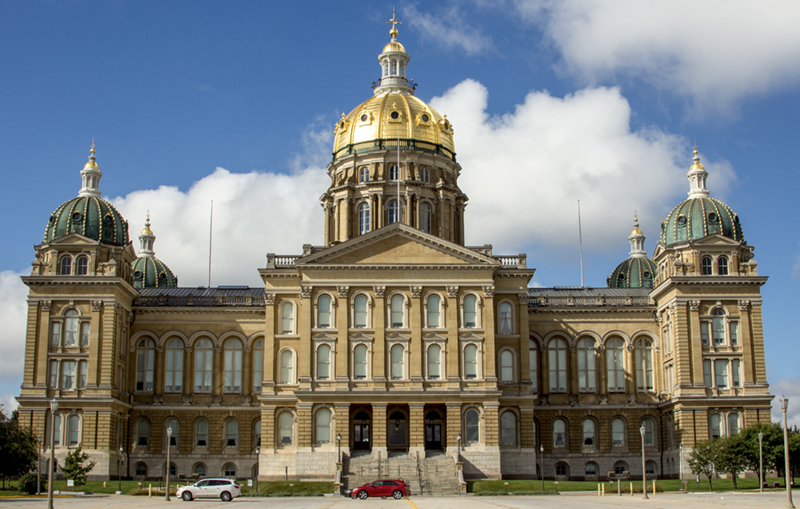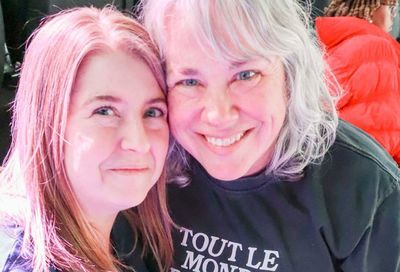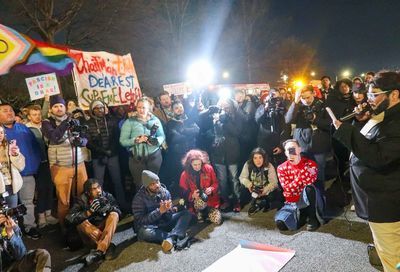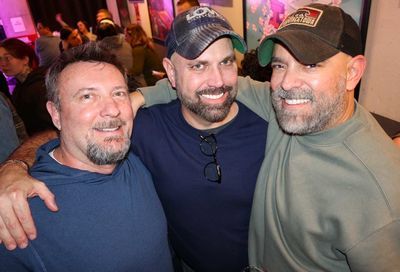Fighting to Save Our Youth
The Trevor Project's Charles Robbins on the plight of LGBT youth
Charles Robbins never attempted suicide.
Growing up in Denver and struggling as a gay youth, however, Robbins found solace in alcohol. ”I remember my first drink was when I was 5 years old,” he says. ”My mom’s cough-syrup elixir was whiskey with honey. I remember vividly the moment I first had that. It was such a warm fuzzy feeling and one that stuck in my memory forever.”

Charles Robbins
By his early teens, Robbins was an addict.
And while he spent the first half of his 20s drowning in alcohol and other substances, he found a way out by picking up a telephone and calling a substance-abuse hotline.
Today, Robbins is a success story. He’s been sober for nearly 20 years. Living in Los Angeles with his husband, Damon Romine, Robbins serves as the executive director of The Trevor Project, an organization providing 24-hour, toll-free, phone assistance to LGBT and questioning youth who are contemplating suicide.
The Trevor Project gets its name from the 1994 short film Trevor, about a young gay man who attempts to take his own life. Before the 1998 HBO broadcast of the film, the filmmakers – James Lecesne, Peggy Rajski and Randy Stone – realized that there was no such resource line available for viewers who might be suffering from similar problems. So they created one.
Today more than 500 people volunteer for the organization in various capacities, while more than 160 trained counselors take calls from those in need from Trevor Project’s two call centers in Los Angeles and New York.
While Robbins was able to find blue skies and dry land in his own life, sadly things don’t appear to have improved for LGBT and questioning youth who are oftentimes harassed or bullied to the point of contemplating – or attempting – suicide. Despite a recent string of such suicides, Robbins doesn’t believe there has been an increase in the tragedies. What has increased, he says, is media coverage.
According to Robbins, 34,000 people commit suicide annually.
”I really think there’s a lot of work to be done here,” he says. ”In my view The Trevor Project is still a young organization with a lot of potential. I feel like we haven’t even scratched the surface in terms of what part we can play in suicide prevention.”
METRO WEEKLY: How have things changed for LGBT youth during your four-year tenure at The Trevor Project?
CHARLES ROBBINS: I think that culturally and in the media there have certainly been advances. But when you look at our call volume and the issues that youth still present, it doesn’t feel like much has changed. There are more representations of lesbian, gay, bisexual and transgender individuals in pop culture, but that hasn’t necessarily changed homophobia.
MW: Does frustrate you, or is that something you’ve learned to accept?
ROBBINS: I’m still frustrated about it. In a world where one would think that culture could persuade a change of hearts and minds, the pervasiveness of religious upbringing and conservatism still holds back our society.
MW: Is it easy to reach LGBT or questioning youth, to let them know about Trevor Project’s existence?
ROBBINS: No. I don’t think that we would see the number of suicides if there were more awareness. And that’s really important for us.
We have a robust online presence. And even though we have a lot of recent celebrity outpouring, the difficult thing is to reach youth in rural America. How are they getting the message that they’re loved and supported?
MW: Why is it difficult for you to do that? Are schools reluctant to help?
ROBBINS: That’s the thing. For whatever reason, it’s just difficult to get into them. The other part is that there’s so many of them. There are over 14,500 public high schools in America. That’s a lot. Where do you start?
We have to be able to get our message in front of youth in more robust and creative ways. There shouldn’t be a day when any young person doesn’t know we exist as a resource. And there’s a lot of work to be done in the schools across the country. The fact that evidence can tie bullying and harassment to suicide, it’s painful to know that that kind of thing is given free license in the playgrounds of America. We’ve got a lot of work to do.
MW: Still, you say there wasn’t an increase in LGBT suicides recently, but rather an increase in the amount of media coverage. What do you attribute that to?
ROBBINS: It’s hard to put your finger on it, but I think that there have been more journalists who recognized that there were some linkages between the suicides that were reported. That’s number one.
And number two, there were more individuals who were getting the word out about the suicides to journalists. So there’s more reporting going on and therefore the opportunity to tell these stories.
MW: Is the White House doing anything to address this?
ROBBINS: They haven’t done anything with regard to bullying and such. The Substance Abuse and Mental Health Services Administration funds the lifeline 1-800-273-TALK, but there’s no carve-out funding for LGBT. There’s all kinds of things the administration could do that is not happening.
MW: What would you like to hear President Obama say in addressing this problem?
ROBBINS: That the federal government is pursuing the Safe Schools Improvement Act. That it passed and that there are repercussions for schools that don’t have safe environments. And that it’s incumbent for every student to feel safe so that they have the kind of education that they deserve.

(Photo by © iStockphoto – Nikolay Titov)
I think that what’s happened today is that youth have gotten to be meaner. And they’ve learned how to be meaner because you can be a bully and not have to have physical strength because of technology.
MW: Why are teachers reluctant to talk about anti-LGBT bullying?
ROBBINS: Because [that would be] acknowledging that they’re not doing something when they’re competing for dollars and their budgets are being cut, and the classroom sizes are enormous, and parents are dropping off their youth like it’s daycare and not school. It’s just a sad state.
MW: What do you think of Dan Savage’s ”It Gets Better” campaign?
ROBBINS: Anything that has a future orientation and that is positive is a great thing. We love it.
We also know that a lot of youth are thinking, ”I don’t want to wait until high school for it to get better. Can’t it get better today?” We believe that it can get better today. That’s why The Trevor Project is here. Getting the word out about our organization to youth is so important, for them to recognize there is a resource. Most youth aren’t help-seeking, and it’s really important for youth to know that there’s a free, confidential service that they can call 24 hours a day.
MW: What brought you to The Trevor Project?
ROBBINS: Really, at the core it’s the mission, and the fact that it’s the only organization working on suicide-prevention efforts for gay youth.
MW: Had you seen the film Trevor?
ROBBINS: I did. When I saw the film I identified with it. It certainly brought back memories of my childhood.
MW: Did you experience bullying in school?
ROBBINS: It wasn’t physical. But there was certainly mental bullying. And it was because I kept quiet. I stayed out of the way. There were verbal epithets that were used that I encountered, yes, but physically no. It was just pervasive. And, at that time, there wasn’t a lot of conversation around it. People weren’t out in school when I was in school. I was hiding myself from myself.
MW: Is it discouraging to know that’s still happening in 2010?
ROBBINS: Yeah, although the issue is that the youth are coming out at a much younger age. So they’re more exposed than before. In my growing up people really didn’t come out until after college.
MW: What would you tell yourself if you could go back to that time?
ROBBINS: Just to be true to yourself. I was more scared about what people would think. The reality is that my own mind was the culprit. I don’t know…. Had I self-expressed in high school, would it have been horrible or not? I made sure that I was safe – and I would say that to any youth. You have to think about the consequences of coming out, and if you’re not in a safe environment and you don’t need to come out, then that’s okay. But you don’t need to internalize it so much where you feel that you’re alone or isolated. There are ways today that you can get connected. Obviously, online is one way. We didn’t have that when I was growing up. I didn’t have a way to connect with other people like me, so I felt alone.
MW: Were you ever suicidal?
ROBBINS: I never acted upon it, but I certainly had ideations. I think many of us did. Like, ”Oh, that would be so much easier than having to deal with this.”
MW: What is your earliest memory of being gay?
ROBBINS: I would say probably around [the age of] 12 or 13, reaching puberty and having kind of the warm fuzzies for other boys. It was kind of the consciousness that I had. I didn’t act on it physically until I was 16, and I didn’t come out until I was 26. It was a time where there weren’t a lot of positive role models and I had a lot of internalized homophobia that I had to work on. My coping mechanism was through drugs and alcohol. I was in junior high and high school when I was drinking and using drugs. I genetically was alcoholic and so that is part of my story. But I’ve been clean and sober for 20 years now.
MW: To what do you attribute that internalized homophobia?
ROBBINS: Society. The message that one receives [about homosexuality] when you’re a young person is really all about the fact that marriage is not a possibility and that religious doctrine had deemed it sinful. Those kinds of things permeate you when you’re young.
MW: You mentioned that you were ”genetically” alcoholic. How so?
ROBBINS: My mother was an alcoholic.
MW: How did that affect your childhood?
ROBBINS: During my adolescence and teenage years I had to cope with my mom, who was heavy into her alcoholism. It was difficult. It’s hard to be the parent of a parent when you’re young.
MW: Did you ever feel like your mom was drinking because of your sexuality?
ROBBINS: No. I never equated that, fortunately. I kind of knew that she had a problem, and I knew other people that had problems with [alcohol]. Quite frankly, it enabled me. She was the ultimate enabler.
MW: What happened when you acted upon your sexuality?
ROBBINS: It was one of those situations where I had a neighbor and we just fooled around. We both never spoke about it again, and I felt shameful after that experience. And so I repressed my desires and everything until I was in my twenties, and then I basically just kept it quiet. I didn’t express myself at all to anyone else. Although looking back on it, I knew my friends knew, but it was just never talked about.
MW: How did you deal with your drug/alcohol problem and find sobriety?
ROBBINS: Like most individuals who go through that process, you reach a bottom at a certain point. I, fortunately, had the will to recognize that it wasn’t a path that I wanted to continue to go down. It was a time I call the ”tumultuous twenties,” a time where many of the people I was associated with, all we did was go to the gay bars and use drugs and alcohol as a recreation. It became excessive and I just, at a particular point, recognized that I couldn’t go on anymore like that.
MW: What was the turning point?
ROBBINS: Binging was the turning point. One morning I woke up and called a help line to get admitted to a treatment program. That’s really why I believe help lines are lifelines. Within 24 hours I was picked up and delivered to a treatment facility in Oxnard, Calif., for a 30-day program. It was the scariest, hardest thing I ever did. I probably should have done that several years earlier, but you just have to go through what you go through until you’re ready. There’s a point in time that you hopefully get some clarity about it. I was emotionally dead. I couldn’t feel anymore. Once I got there it was the best decision I ever made. I got sober when I was 29.
MW: What was the scariest part about your first night in the facility?
ROBBINS: The biggest issue was, ”Oh, my gosh, I’m gay. What am I doing in this place? Nobody is going to accept me.” It was the first time in my life where I was in an unfamiliar facility, unfamiliar surroundings with unfamiliar people. My entire life I had surrounded myself with people who knew me. That was scary. The next morning I remember waking up and I just vowed to myself, I said I need to make this work, and I just dove right in and don’t regret it at all.
MW: Was it hard for you to break away from your friends who you were partying with?
ROBBINS: The second they found out I was in a treatment program they disappeared. At that moment I was probably a little disappointed, but then I recognized that the only reason why they were friends was to hang out and party, and that was okay with me to move on.
MW: What did you do after rehab?
ROBBINS: I had a short stint in Los Angeles and then I moved back to Colorado and rekindled my relationship with my father. Because of my drug and alcohol usage, I never really got close to my father. Part of my recovery was making amends. I was able to do that. I’m glad I went back to Colorado to do that, because later on he passed away and I recognized that had I not gone back to Colorado to mend that relationship I would have never known my father.
MW: What was it like making that trip back home from Los Angeles?
ROBBINS: It was on July 4th, and I call it ”my independence day.” I was 29 and I really felt like I had a whole new life ahead of me. I drove a car from Los Angeles to Colorado and went through the Utah desert. It was a very spiritual drive. I was by myself and thinking about the past, all the pain that I had been through. But it was emotional pain, not physical pain. It was just a lot of sadness, a lot of isolation, and then I acted out on it. I had repressed my sexuality for so many years and then when I came out when I was 26, it was kind of like the pendulum swing to the other side and all I knew was partying and fun and unfortunately, because I’m alcoholic, that took over. So there was a four-year trajectory of just a lot of use and abuse.
MW: What was it like confronting your father?
ROBBINS: There was no confrontation — it was just many, many years of isolation from him. In treatment, part of the process was to write a letter to somebody you feel like you need to make amends to and I chose to write a letter to my father, not knowing that at the end of the writing exercise that the letters would actually be mailed. So I wrote the letter and at the end of the exercise the staff handed out envelopes and told us to address them and I was petrified of that. But I did it and I put a stamp on it and about two weeks later, while I was in treatment, I got a letter from my father and he said that he was glad that I was getting the help that I needed. I had written that I was in drug and alcohol treatment and, ”Oh, by the way, I’m gay.” So I came out to my father through a letter in rehab. And he wrote me back and he said, ”I love you just the way you are.”
MW: Was it difficult going back to the house where you had experienced so much pain?
ROBBINS: It was actually cathartic, because I got to realize that my pain was of my own making, that I denied myself to be authentic and it was my own internalized homophobia that kept me from being a joyous young person. When I got back there, I recognized the only person that stuck me in the closet was myself. When I pulled up to the house, my father came out and greeted me and hugged me. It was fine. And all of those years that thinking that my father or my family would reject me was not true. I just kept thinking to myself, ”Oh my God, that wasn’t as bad as I thought it would be.”
MW: So then would you call that a turning point? A sort of ”rebirth”?
ROBBINS: Oh, yeah. It was the beginning of my service work. I feel like I cleared away the wreckage of my past, and I had a whole new world in front of me.
One of the things I learned in treatment is you can’t keep what you don’t give away, so it’s important to be of service. My service work was working with HIV/AIDS. It was a time when people were dying. When I went back to Colorado, I was familiar with the work of Project Angel Food in Los Angles and I was looking for a [similar] volunteer program where I could volunteer my time to be of service. There wasn’t a program in Colorado at the time, so I founded it. It was a time when there was a rally cry for support. People were dying.
MW: You then moved on to work for The Gay & Lesbian Alliance Against Defamation (GLAAD) and later the National Gay and Lesbian Task Force. What took you to those organizations?
ROBBINS: After seven years of doing HIV/AIDS work, one of the cathartic moments in my life was when Matthew Shepard was taken out to the field and [beaten] and tied to a fence post and left to die. I thought to myself, how could that happen in this day and age when we went through so many years of losing people to AIDS? I thought that the world had come about. I thought there was greater acceptance. And then that happened and it infuriated me. I was so burnt out on doing HIV/AIDS work and I thought I should do something for the gay and lesbian community.
MW: What’s the hardest part of your job as the leader of The Trevor Project?
ROBBINS: There isn’t a hard part to it. I’m so in love with it and so passionate about it that there’s nothing difficult. The only thing difficult is knowing that another life is lost. Especially the stories that we hear on the line can be incredibly heart-wrenching. The good news is there is an organization that exists. And that’s The Trevor Project.
The Trevor Project’s toll-free, 24-hour, suicide-prevention help line for LGBT youth is 1-866-4-U-TREVOR (488-7386). For more information, visit trevorproject.org.
Local Washingtonians seeking to get involved with the Trevor Project are encouraged to reach out to the Washington, DC Ambassadors Council of The Trevor Project.

Support Metro Weekly’s Journalism
These are challenging times for news organizations. And yet it’s crucial we stay active and provide vital resources and information to both our local readers and the world. So won’t you please take a moment and consider supporting Metro Weekly with a membership? For as little as $5 a month, you can help ensure Metro Weekly magazine and MetroWeekly.com remain free, viable resources as we provide the best, most diverse, culturally-resonant LGBTQ coverage in both the D.C. region and around the world. Memberships come with exclusive perks and discounts, your own personal digital delivery of each week’s magazine (and an archive), access to our Member's Lounge when it launches this fall, and exclusive members-only items like Metro Weekly Membership Mugs and Tote Bags! Check out all our membership levels here and please join us today!




